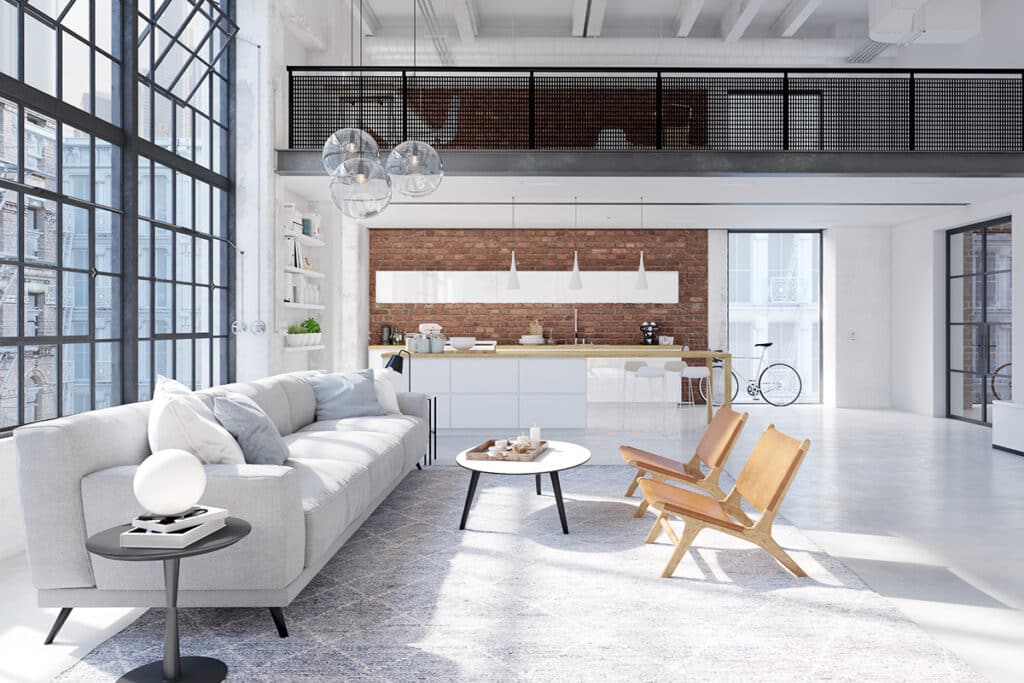Tips for producing a good, healthy climate in your own four walls
People spend around 90 per cent of their time indoors. It is therefore all the more important to pay special attention to the oxygen content and humidity of the air. Our expert gives tips on how to produce a healthy indoor climate with the help of good ventilation and careful product selection
Tip 1: Check your ventilation habits, air the rooms three times a day
Observe for a few days when, how long and how often you ventilate the rooms during the day. The normal activities of everyday life such as cooking, showering and drying laundry load the indoor air with moisture, odors and emissions. During sleep, we need around 280 to 300 liters of air per hour. When exercising full power on the exercise bike, air consumption may increase to 3600 to 4000 liters. This is why we need fresh air! In any case, it is essential to completely replace the air inside the rooms several times a day. The best way to do this is by shock- or cross- ventilation. Airing the rooms for ten minutes three times a day should be sufficient for most households. If there is too little ventilation, the CO2 content will quickly reach an alarming level, which may cause headaches, concentration problems, tiredness and poor sleep. When adding the emissions from cigarettes, burning candles, building materials, furniture surfaces and cleaning agents, it is obvious that there is an increased risk of developing asthma or allergies over time.
Tip 2: Control the humidity, heat sufficiently in winter
Regular and thorough airing of the rooms helps to keep the air humidity at a health-compatible level. It is a well-known fact that people release a lot of moisture into the room. But during the cold winter season, the air is too dry in many areas, which may irritate the respiratory tract. This is why heating is so important in addition to ventilation: Warm air can absorb much more moisture than cold air. Please keep in mind that overly economical heating promotes the development of cold wall surfaces with the resulting risk of mold growth.
Tip 3: Check the option of controlled ventilation
The classic way to bring fresh air into your own four walls is through shock ventilation. This method is particularly effective when fully opening opposite windows to produce a draft. However, this approach requires a good deal of discipline. Modern buildings are often equipped with central ventilation systems. They draw in fresh air from outside, pass it through fine dust and pollen filters and release it to the inside. At the same time, they extract stale air with a high moisture content, especially from bathroom and kitchen, and transport it to the outside. Thanks to the built-in filters, pollutants are kept outside – on condition that the filters are maintained and replaced at regular intervals. With controlled ventilation systems, a heat exchanger recovers 80 to 90 per cent of the heat from the exhaust air and returns it to the supply air. This minimizes heat losses and saves a lot of energy.
Tip 4: Make sure to use health-compatible building products
Building materials and surfaces play a key role for a healthy climate in our homes. When planning refurbishment work, it is important to pay special attention to the proper choice of products. In the course of modernization, you may also like to remove and replace some old and harmful materials. Only products that are not harmful to health should be used. Reliable guidance is provided by the EMICODE® label of the GEV, the German Association for the Control of Emissions in Products for Flooring Installation, Adhesives and Building Materials. Whether parquet lacquers, primers, levelers, adhesives or sealing tapes and insulation materials – there is a large variety of products that have been awarded the EMICODE® certificate. It guarantees the lowest possible emissions, also with regard to volatile organic compounds (VOCs), which are hazardous to health. Good for you to know: Manufacturers must have their products spot-checked by independent external institutes without prior notification. The validity of EMICODE® licenses is limited to five years, after which they must be renewed.

Photo: ©2mmedia/123rf.com/GEV
Do You Have Questions?
If you have any questions on certain topics or want to contact us for another reason, please contact us by phone, fax or email.
Phone: +49 211 / 67931-20
Fax: +49 211 / 67931-33
info@emicode.com
Share article on Social Media: